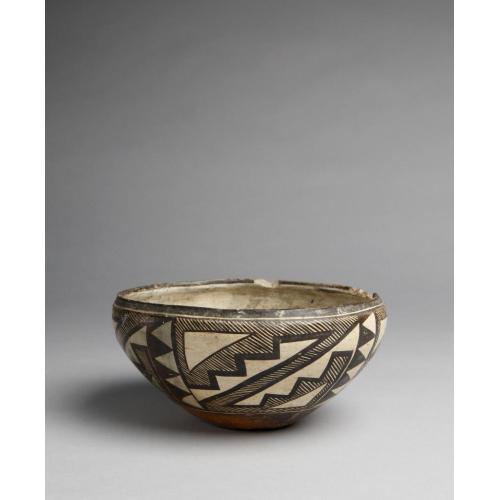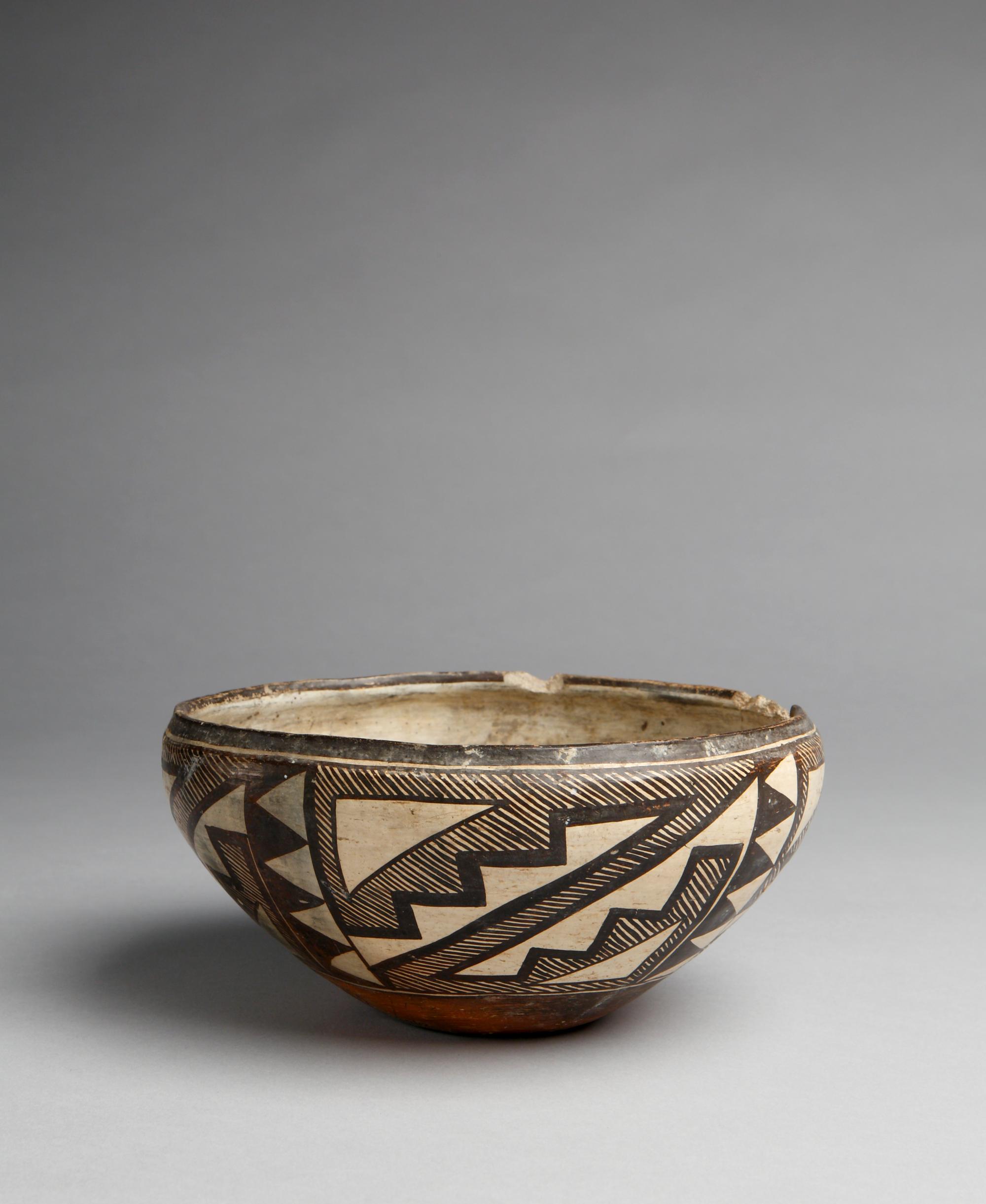
Photograph by Addison Doty. Copyright 2015 School for Advanced Research.
Bowl, food
Date: 1910-1920
Artist or Maker: Unknown
Dimensions:
Dimensions: 8.9 × 19.1 cm (3 1/2 × 7 1/2 in.)
Weight: 0.4 kg (0.9 lb.)
Medium: clay | paints
Credit Line: Indian Arts Fund purchase for the permanent collection, 1928.
Place Made:
Valencia County, New Mexico, Southwest, United States, North America
Object Number: IAF.1128
Not on view
Tribal Collection Review RemarksAccording to the participants in the Acoma collection review visit November 29-30, and December 1, 2016 (Events Record “Collection Review: Acoma Pueblo Review 7”): The temper used in this bowl is very fine sand, Pearl Valdo calls it blow sand. It appears shiny in the clay. There is a small triangle shaped chip missing from the rim.
NOTE: The shape of the sculpted rim on bowls may be to help prevent cracks from forming during firing and use.
According to the participants in the Acoma collection review visit February 26-27, 2019 (Events Record “Collection Review: Acoma Pueblo Review 12”): Food bowls are used for serving or consuming food and are smaller in size than dough bowls. They are made with a similar method as water jars, but without extending the clay upward to form the shoulder and neck. Smaller bowls are typically used to hold ashes, cornmeal, traditional medicines, or food offerings. The interior of food bowls often become smoother overtime from use and shinier from fats in the various foods. These bowls can be washed with soap and water; however, scents of what it was carrying will sometimes linger afterwards.
Interiors of bowls will sometimes be slipped and burnished to create a seal, preventing liquids and foods form seeping into the clay. Some bowls are also decorated on the interior but this can be challenging and requires skill and patience.
Food bowls are still being made and used today Acoma. Like other forms, food bowls are also being made and painted with commercial products and are more common these days for serving food at gatherings as they are often glazed and are easier to clean. Some families still use bowls made from traditional natural clay for serving.
In Collection(s)
Bibliography:
The Indian Arts Research Center, in collaboration with Native American community scholars, strives to present accurate collections records. Records may be updated as new information becomes available and is reviewed with the Native American community having cultural affinity to particular items. Please write to iarc@sarsf.org if you have questions or concerns related to the documentation.
